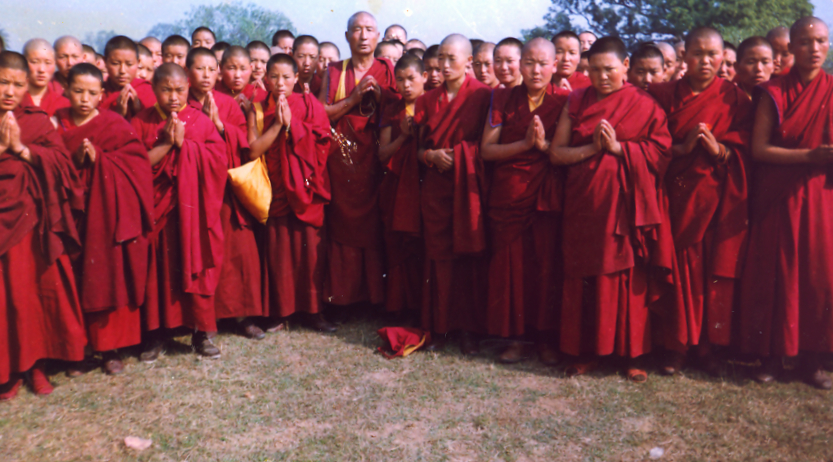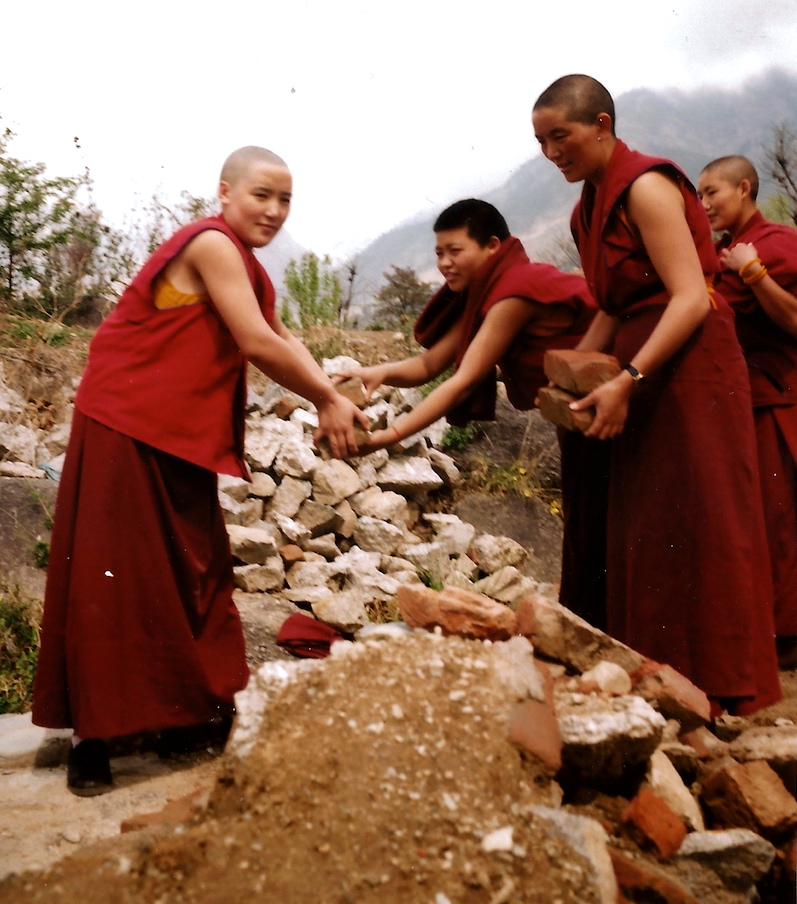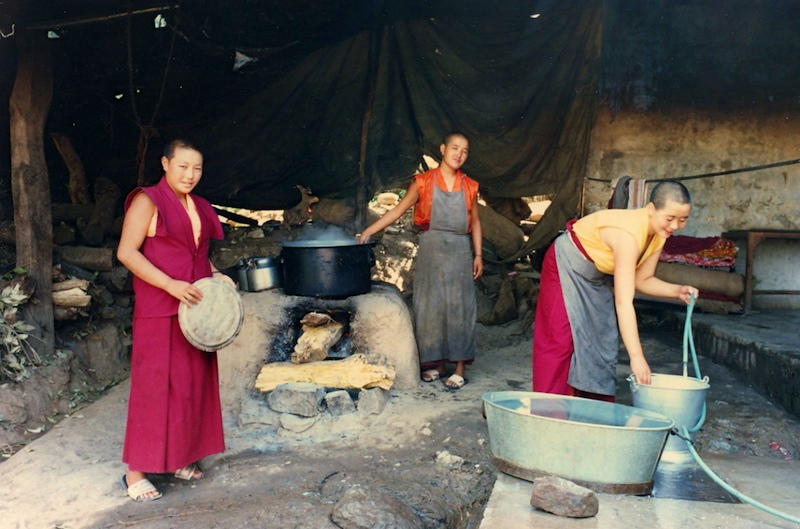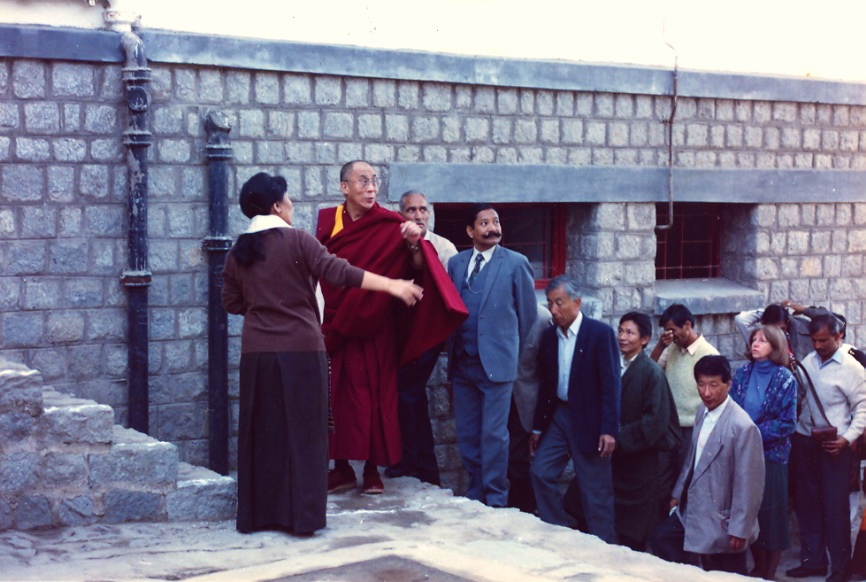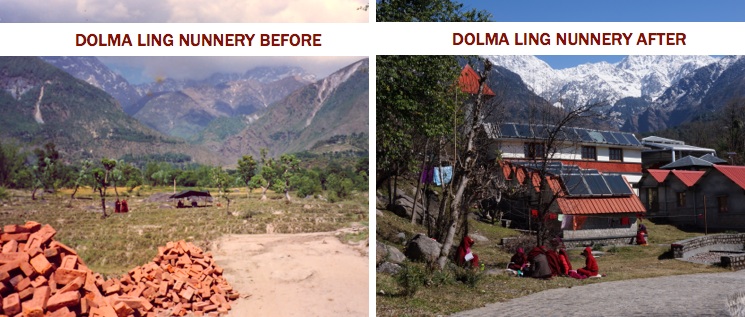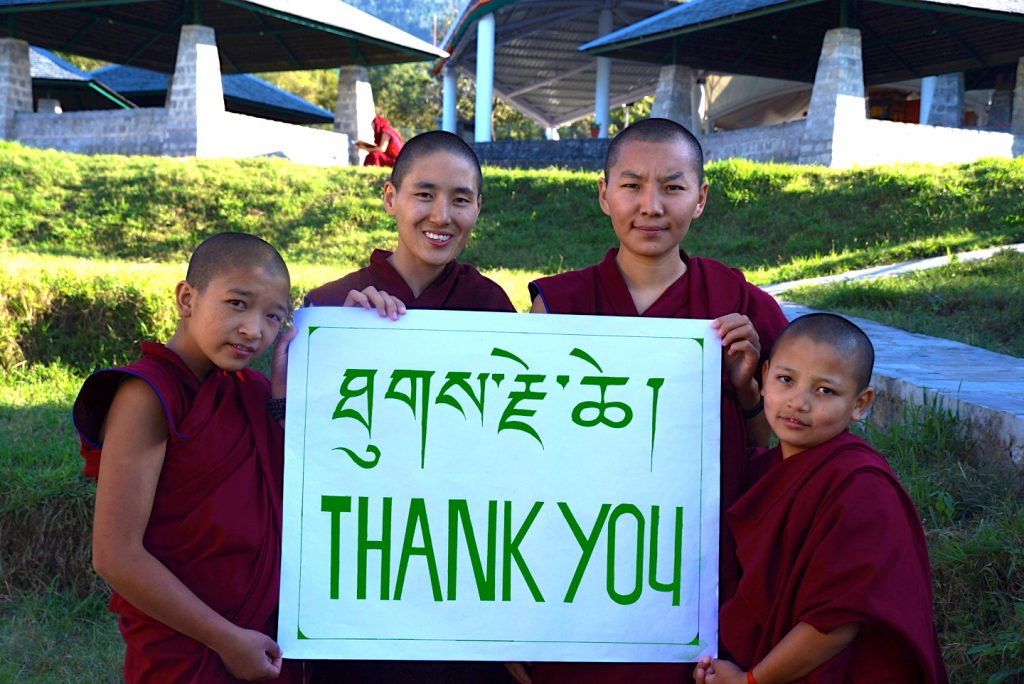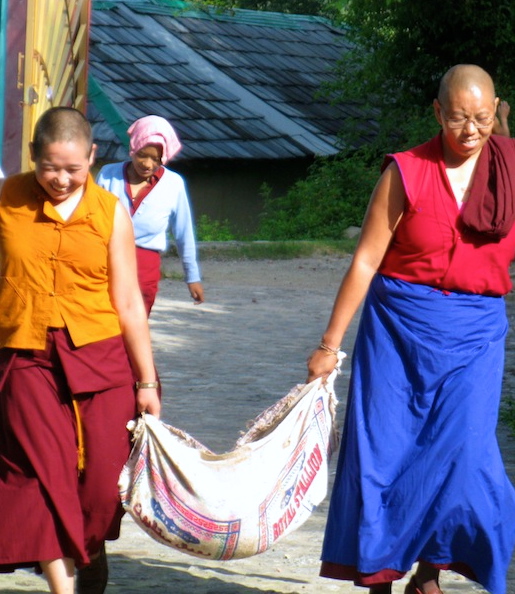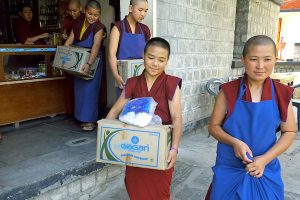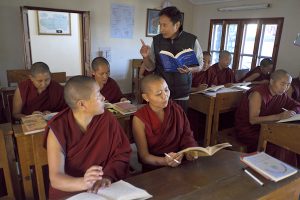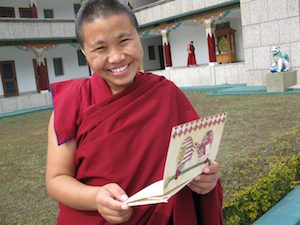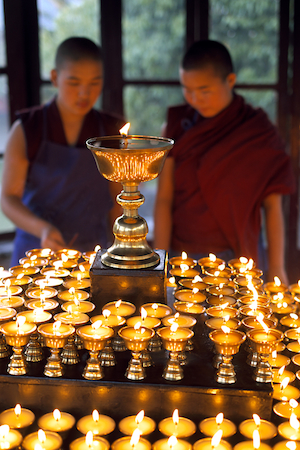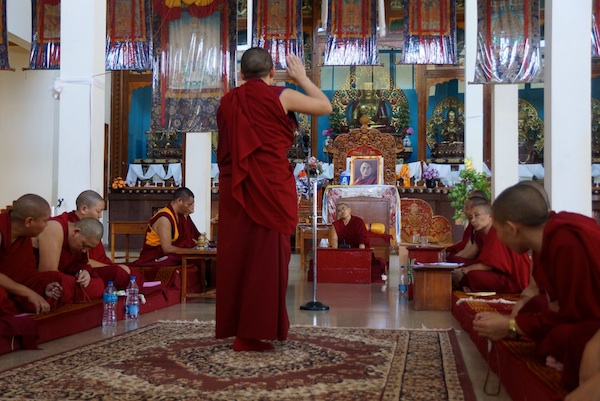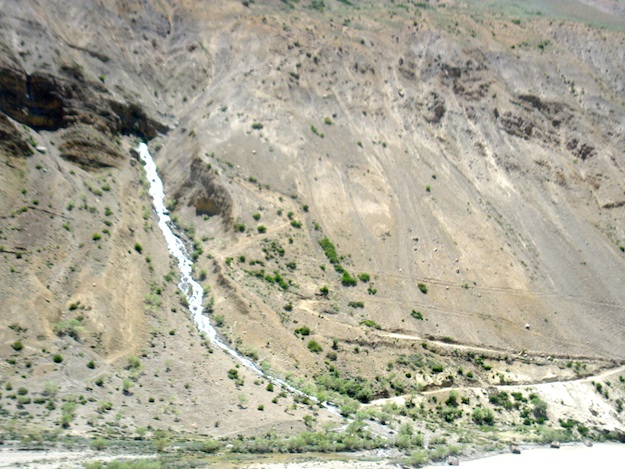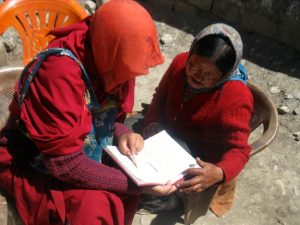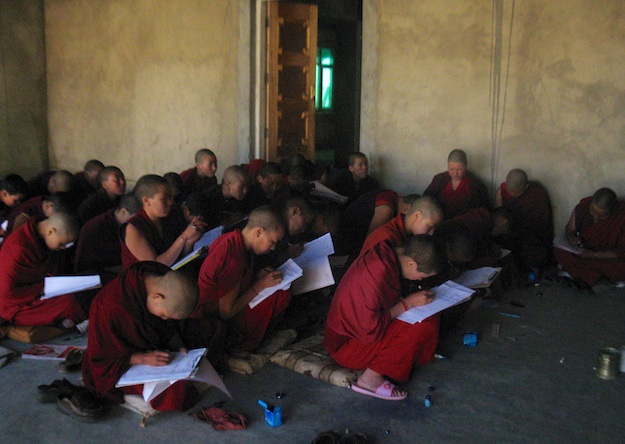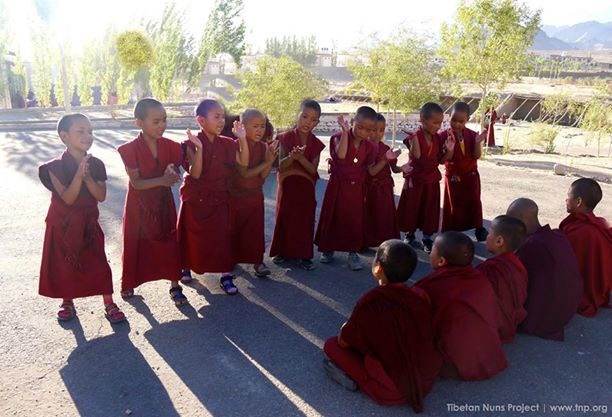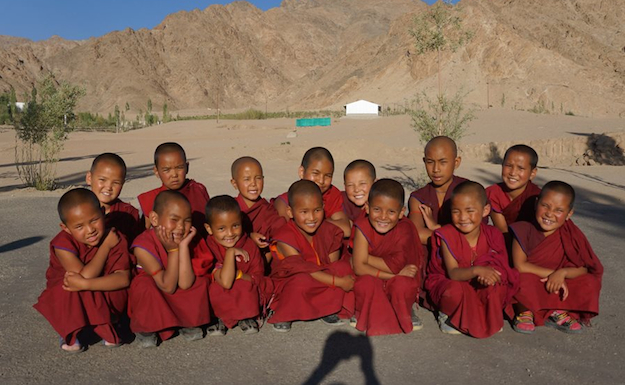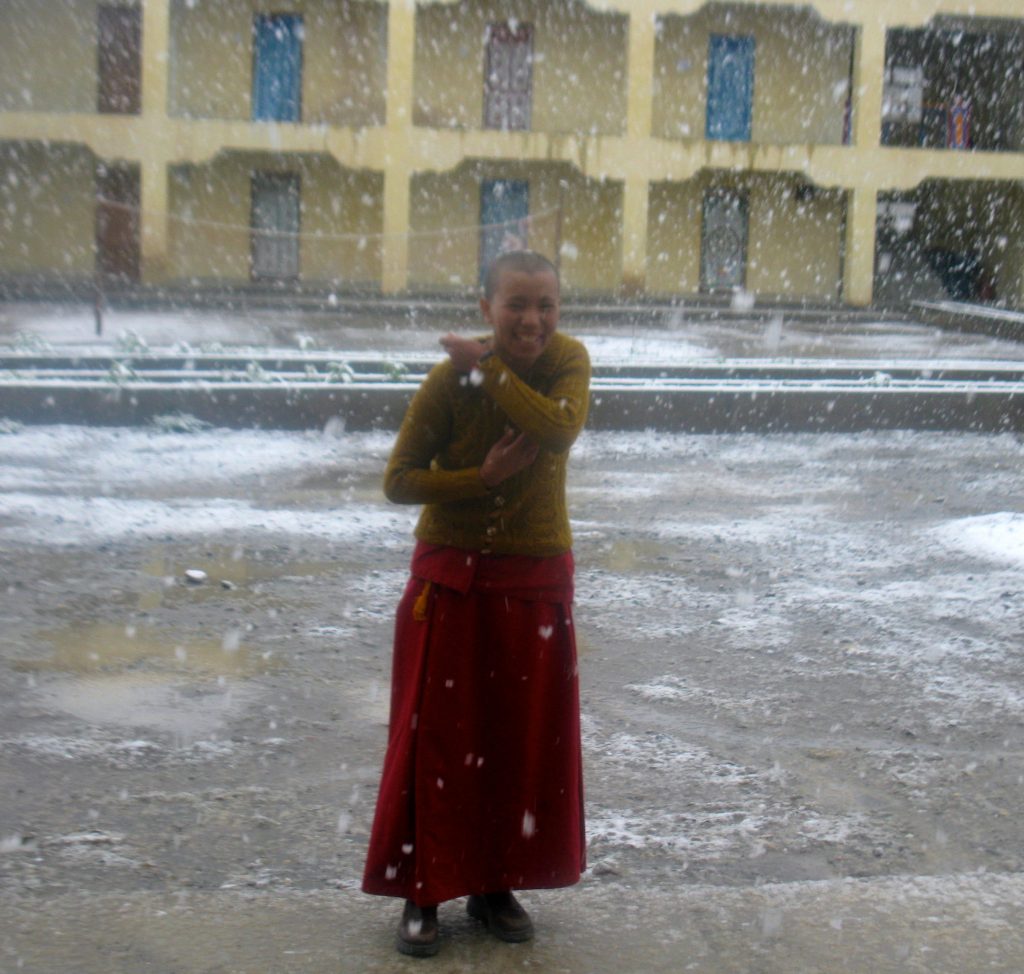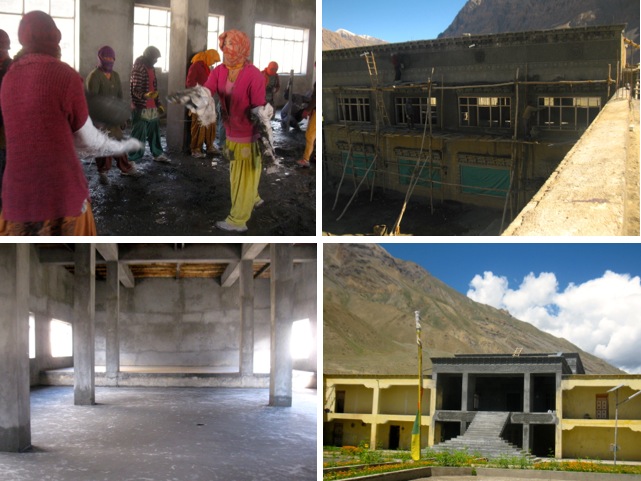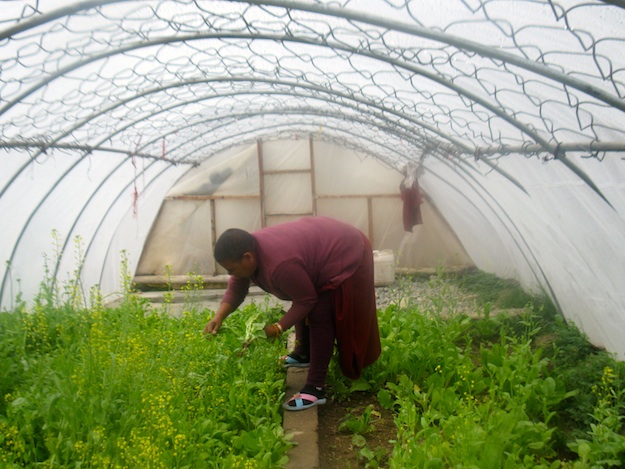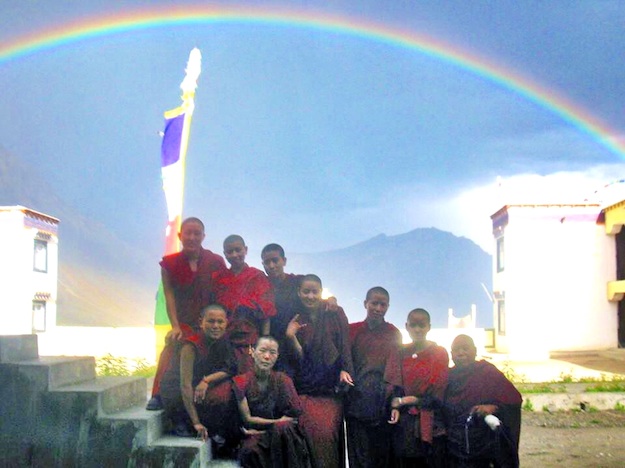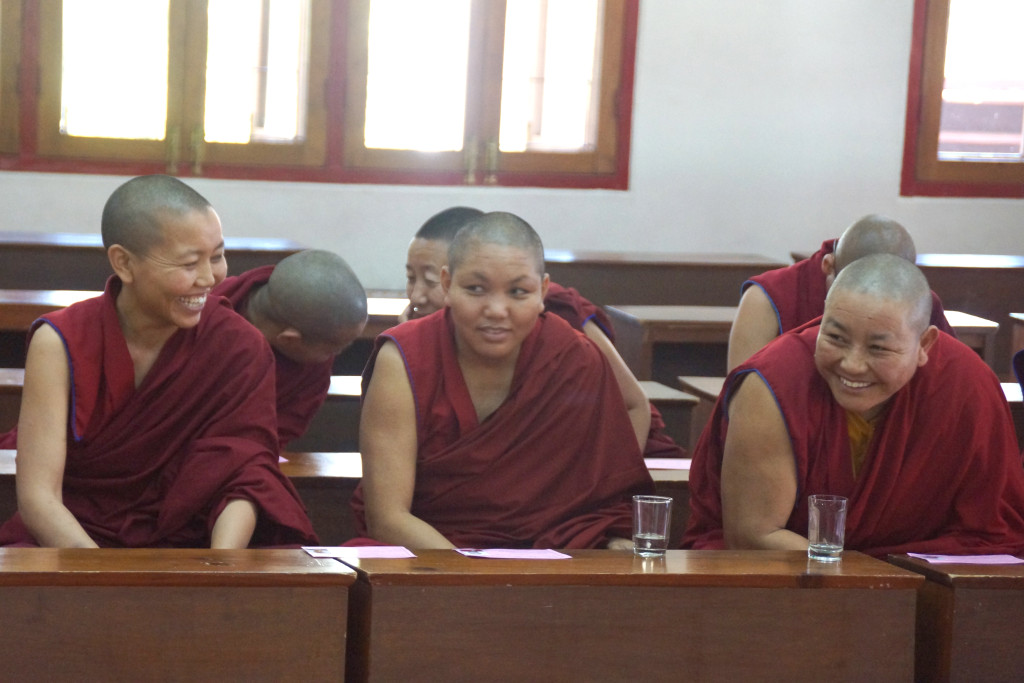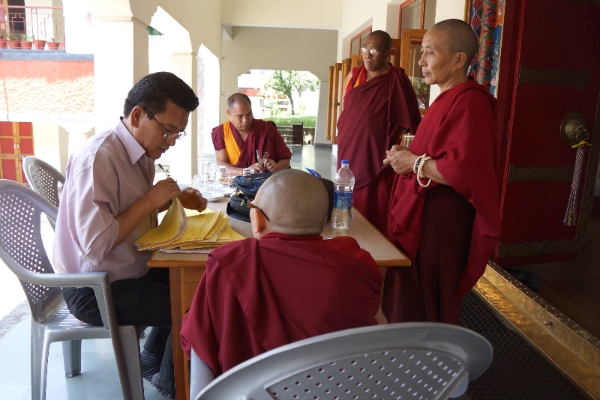Twenty Tibetan Buddhist nuns have just made history, becoming the first Tibetan women to successfully pass all the exams for the Geshema degree, equivalent to a Doctorate in Buddhist philosophy. Exam results were announced by the Department of Religion and Culture of the Central Tibetan Administration. All 20 candidates for the degree passed.
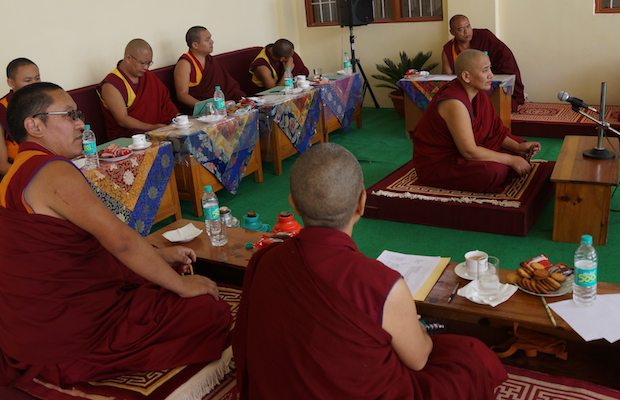
A Geshema candidate on Day 1 of the Geshema examinations held this year at Geden Choeling Nunnery in Dharamsala, India. Photo courtesy of Venerable Delek Yangdron.
Their success fulfills a longstanding wish of His Holiness the Dalai Lama and marks a new chapter in the development of education for ordained Buddhist women and is a major accomplishment for Tibetan women.
The Geshema degree (a Geshe degree when awarded to men) is the highest level of training in the Gelug school of Tibetan Buddhism. These women pioneers have accomplished a level of scholarship and Buddhist training that, until recently, was only open to men.
The Geshema examination process is an extremely rigorous one that takes four years in total, with one round per year each May. During the 12-day exam period, the nuns must take both oral (debate) and written exams. They are examined on the entirety of their 17-year course of study of the Five Great Canonical Texts. In 2011, a German nun, Kelsang Wangmo, who spent 21 years training in India, became the first female to receive the Geshema title.
The new Geshema nuns will formally receive their degrees from His Holiness the Dalai Lama at a special ceremony at Drepung Monastery in Mundgod in southern India.

Good luck! Nuns departing from Dolma Ling Nunnery to take their Geshema exams in the spring of 2016 receive wishes of good luck from the other nuns. Photo courtesy of Venerable Delek Yangdon
This occasion is also a milestone for the Tibetan Nuns Project, which was founded in 1987 to provide education and humanitarian aid to Tibetan Buddhist nuns living in India. A number of the Geshema candidates were illiterate when they escaped from Tibet. To reach this historic milestone, the Tibetan Nuns Project had to build an educational system from the ground up.
“Educating women is powerful,” says Rinchen Khando Choegyal, Founder and Director of the Tibetan Nuns Project. “It’s not just about books. It is also about helping nuns acquire the skills they need to run their own institutions and create models for future success and expansion. It’s about enabling the nuns to be teachers in their own right and to take on leadership roles at a critical time in our nation’s history.”
Earning the Geshema degrees marks a turning point for the nuns. This degree will make them eligible to assume various leadership roles in the monastic and lay communities, previously reserved for men.
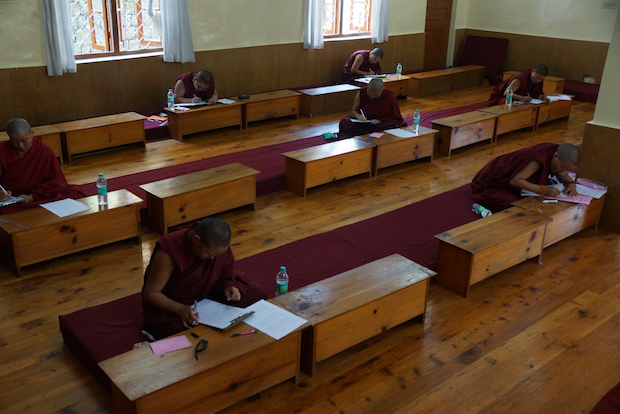
Nuns must take both written and oral (debate) exams each year as part of the rigorous 4-year Geshema examination process. Photo courtesy of Venerable Delek Yangdron
The Tibetan Nuns Project supports 7 nunneries in India as well as many nuns living on their own for a total of over 800 nuns. Many are refugees from Tibet, but the organization also reaches out to the Himalayan border areas of India where women and girls have had little access to education and religious training.

